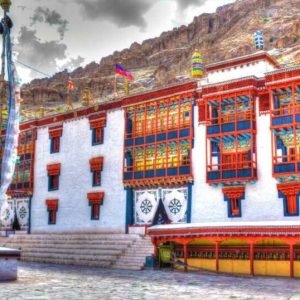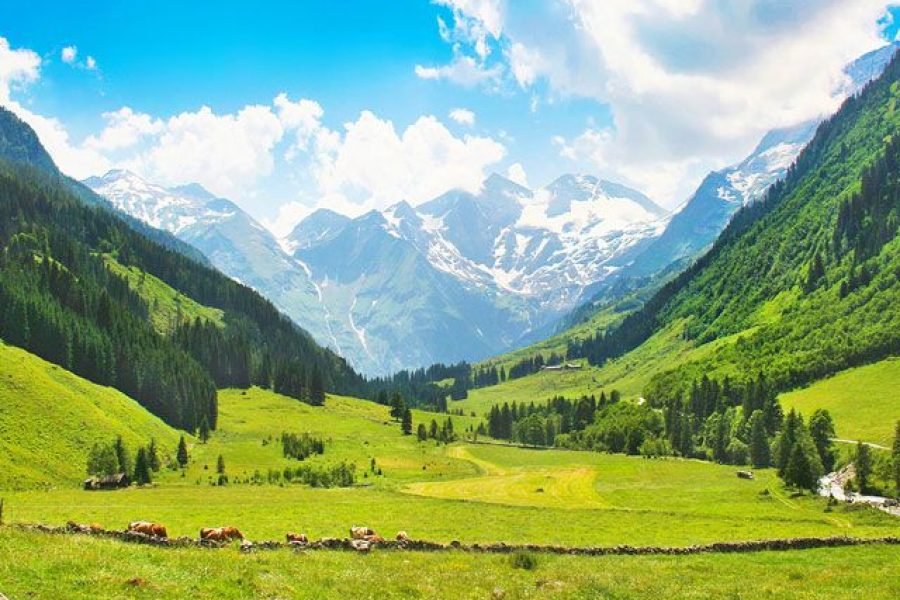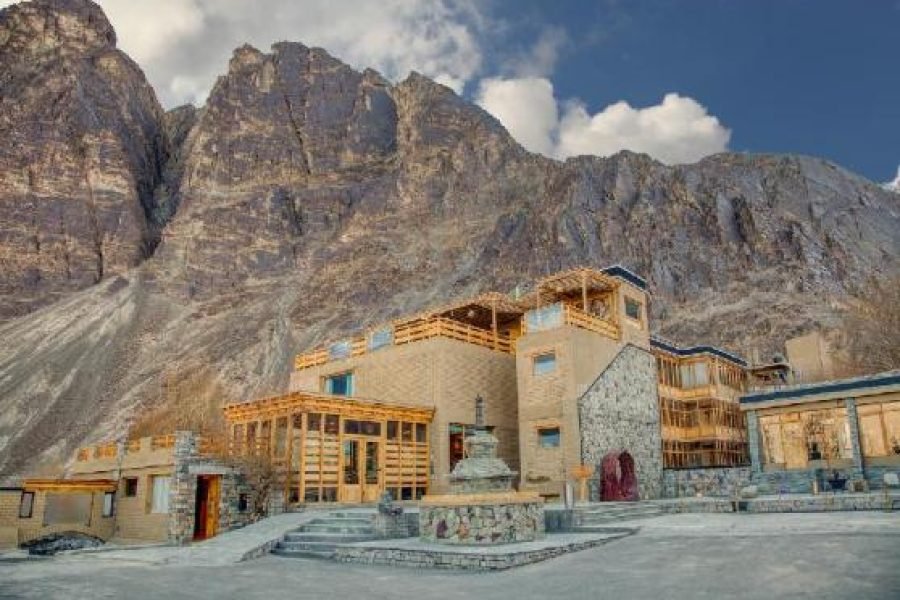Hemis Monastery : A Journey into Ladakh’s Spiritual Heart





Table of Contents
ToggleOne of the most prominent and spiritually significant Buddhist monasteries in Ladakh, the Hemis Monastery is nestled high in the rugged mountains of Ladakh. With its deep history, awe-inspiring architecture, and vibrant religious festivals, it is a significant part of Ladakh’s cultural heritage. Whether you are an experienced traveler, a spiritual seeker, or someone interested in the rich Buddhist traditions of India, you will find the monastery an unforgettable experience.
It is your turn now for getting a detailed as well as comprehensive tour of history, culture, significance, and their impressive annual festivals at Hemis Monastery. In this blog, we will unscramble all the aspects of this incredible destination making it one of Ladakh’s must-visit attractions.
Introduction to Hemis Monastery
Hemis Monastery is the second most important Buddhist monastery of Ladakh, constructed about 45 kilometers to the southeast of Leh. Situated on the banks of Indus River, Hemis Monastery is the largest and richest monastery in Ladakh. Hemis Monastery is a Tibetan Buddhist monastery of the Drukpa Kagyu sect-one of the sub-sects of the Kagyu school of Tibetan Buddhism. Rich collection of ancient relics, murals, and scriptures make it an important center for the study and practices of Buddhism.
Perhaps most famously, the Hemis Gompa hosts the Hemis Festival, a major celebration of all things Tibetan, and is an important pilgrimage center for devotees of Buddhism around the world.
History of Hemis Monastery
The monastic history of Hemis is deeply intriguing and complex, stretching back several centuries. Founded in the 11th century by the great Buddhist master and scholar, Guru Padmasambhava, who introduced Buddhism into Tibet and Ladakh, the structure as seen today was built in the 17th century by the king of Ladakh, Sengge Namgyal, a real patron who expanded and restored the monastery.
Hemis Monastery has served for centuries to preserve Tibetan Buddhism in Ladakh. With its huge collection of scriptures, thangkas or Tibetan Buddhist paintings, and Buddhist statues, the monastery serves as an important learning, meditation, and spiritual activities center.
Architectural/Design Requirements of Hemis Monastery
The architecture of Hemis Monastery is a perfect blend of traditional Tibetan style and Ladakhi influences. The monastery has been built in semi-circular shape, meant to symbolize the Buddhist wheel of life. The complex includes a main Dukhang, residential quarters for the monks, and individual meditation rooms. The structures that have been used include stones and woods, keeping with a very good harmony with the landscapes.
One of the most striking features of the monastery is the mammoth central prayer hall with a gigantic statue of Lord Padmasambhava, plus numerous other shrines and altars. The walls of the prayer hall are adorned with beautiful murals, making up scenes related to the life of Buddha, various Buddhist deities, and some scenes from Tibetan Buddhist mythology.
The Hemis Gompa, being the chief prayer hall, is known for its huge Thanka, a religious painting measuring 12 meters in height. The Thanka is unfurled during Hemis Festival, where a myriad of Buddhist deities and spiritual preachings are portrayed. There is also a museum inside the monastery which tells the most ancient relics, scriptures, and artefacts found, giving the visitor a glimpse of the rich spiritual and cultural heritage of Ladakh.
Importance of Hemis Monastery in Tibetan Buddhism
Hemis Monastery is one spiritual site with great importance not only to Ladakhi, but also to Buddhists all over the world. The monastery is one of the important centers for the Drukpa Kagyu lineage of Tibetan Buddhism. The Drukpa Kagyu is one of the four major schools of Tibetan Buddhism and emphasizes meditation, spiritual devotions, and wisdom.
The Hemis Monastery is a centre where monks perform different spiritual activities, including meditation, prayer rituals, and Buddhism philosophy. Many monks are housed within the monasteries and study there, while other monks dedicate their lives to spiritual enlightenment through training and learning. Hemis is said to have the oldest cultural tradition of education, with monastery scholars historically attracting scholars and spiritual seekers from Tibet, India, and beyond.
Furthermore, Hemis Monastery is renowned for being the seat of the spiritual leader, the Hemis Lama. This Lama plays a key role in guiding the spiritual direction of the monastery and overseeing the welfare of the monks. The lineage of Hemis Lamas has been instrumental in ensuring the continued prosperity of the monastery and its role in promoting Tibetan Buddhism.
Hemis Monastery Festival: A Celebration of Tibetan Culture
One of the most vibrant and culturally rich attractions at Hemis Monastery is its annual Hemis Festival, held every year during the month of June or July. The Hemis festival, to commemorate the birth day of Padmasambhava, showcases a spectacular display of dazzling colors, sacred rituals, and joyful celebrations. Thousands of tourists from around the world, both locals and visitors, converge for the Hemis festival.
Celebrations at Hemis Festival
The festival lasts for two days and features a variety of religious ceremonies, traditional dances, and cultural performances. One of the main highlights of the Hemis Festival is the Cham dance, a traditional dance performed by monks in elaborate masks and costumes. The Cham dance symbolizes the triumph of good over evil and is an important ritual for invoking blessings and protection.
They are usually perfumed with chanting of the flute sounds, drumbeats, and other musical instruments so that it enamours enchanting like a place for spiritualness and devotion. Monks perform these dances in the courtyard of the monastery; the rituals are believed to bring peace, prosperity, and good fortune to the region.
The other highlight of the festival is when the massive Thanka is unrolled. This practice takes place with considerable solemnity and wonder. The Thanka, an enormous embroidered tapestry, unfurls before the naked eye to show closer views of depictions of Lord Padmasambhava, various Bodhisattvas, and all sorts of Tibetan Buddhist deities. According to tradition, the Thanka has mystical powers, and its unwinding is perhaps one of the most longed-for moments of Hemis Festival.
Cultural importance of Hemis Festival
Hemis Festival is not only a religious celebration but also a celebration of Ladakhi culture and traditions. It acts as a means to conserve ancient practices, arts, and customs that have been preserved for ages. At this time of festival, people from walks of life come to celebrate, share, and be drenched with the richness of the cultural heritage of the region.
For tourists and travelers, attending the Hemis Festival provides a unique opportunity to view the vibrant culture of Ladakh firsthand. It is an experience never to forget, with its spirited processions, colorful decorations, and spiritual fervor, making it a premier cultural event in Ladakh’s calendar.
How to Reach Hemis Monastery
Hemis Monastery, situated in Ladakh, is well connected by air, road, and rail with the rest of India. Here’s how you can reach this spiritual abode:
i. By Air
The closest airport to Hemis Monastery is Leh Kushok Bakula Rimpochee Airport, which lies around 45 kilometers from the monastery. Some of the prominent airlines operate flights to Leh from cities like Delhi, Mumbai, and Jammu. After landing at Leh, you can hire a taxi or use a private vehicle to reach Hemis Monastery.
ii. By Road
Ladakh is well connected by roads to the other main cities in India. It can be reached by road either from Manali via Manali-Leh Highway or from Srinagar via Srinagar-Leh Highway. From Leh, this way takes around 1-1.5 hours to Hemis Monastery.
iii. By Rail
The nearest railway station to Leh is Jammu Tawi Railway Station, which is about 700 kilometers away. From Jammu, you can take a bus or taxi to Leh, which takes around 2 days of travel.
Best Time to Visit Hemis Monastery
The best time to visit Hemis Monastery is during the summer months from May to September, when the climate is pleasant with temperatures between 15°C and 30°C. This is also the best season to witness the Hemis Festival, usually during June or July.
If you prefer avoiding large crowds and having a more peaceful time, the periods between March to April and October to November are also wonderful times to visit Hemis Monastery.
Places to Visit Near Hemis Monastery
Although Hemis Monastery is the prime attraction, there are still many other attractions in Ladakh that deserve visits:
Thiksey Monastery: Situated about 17 kilometers from Leh, this monastery is one of the most beautiful monasteries in Ladakh.
Leh Palace: A historical palace offering panoramic views of Leh and the surrounding mountains.
Pangong Lake: A pristine lake located about 150 kilometers from Leh, famous for its changing colors.
Nubra Valley: A remote valley known for its sand dunes, Bactrian camels, and hot springs.
Hemis Monastery: A Pilgrim's Destination
Hemis Monastery is not just a destination for tourists but a holy site for travelers from different parts of the world who are Buddhists. The serene environment of the monastery together with spiritual energy makes it a perfect place for reflection, prayer, and meditation. The history and tranquil atmosphere at the monastery present a perfect place for those seeking to deepen their spiritual practice.
Conclusion
Hemis Monastery is definitely one of the most important and intriguing cultural and spiritual relics in Ladakh. Rich history, mindboggling architecture, and vibrant cultural festivals make Hemis Monastery a must-visit spot for anyone traveling to Ladakh. Whether you are a history enthusiast, a spiritual seeker, or a nature lover, Hemis Monastery offers experiences unlike any other.
With its sacred atmosphere, scenic beauty, and culture, Hemis Monastery has been the ever-lasting symbol of Tibetan Buddhism in India. Hemis Monastery holds a great deal for one who, with his inner soul, is looking for a true development from the spiritual riches of the Himalayas.
FAQ's
1. Where is Hemis Monastery located?
Hemis Monastery is located in the Hemis village, approximately 45 kilometers southeast of Leh, in the Ladakh region of northern India.
2. What is Hemis Monastery known for?
Hemis Monastery is famous for being one of the largest and wealthiest Buddhist monasteries in Ladakh, known for the Hemis Festival and its rich collection of ancient Buddhist artifacts.
3. When is the Hemis Festival celebrated?
The Hemis Festival is celebrated annually, usually in June or July, in honor of Guru Padmasambhava, the founder of Tibetan Buddhism.
4. What is the significance of Hemis Monastery?
Hemis Monastery is significant as a spiritual center for Tibetan Buddhism, with its deep historical roots and importance in preserving Buddhist culture, teachings, and art.
5. Can I visit Hemis Monastery?
Yes, Hemis Monastery is open to visitors throughout the year, though the best time to visit is during the Hemis Festival, when the monastery comes alive with cultural events.
6. Is there an entry fee for Hemis Monastery?
There is a small entry fee for visitors, which goes toward maintaining the monastery and its activities.
7. What is the Hemis Monastery architecture like?
Hemis Monastery features traditional Tibetan Buddhist architecture, including grand prayer halls, ancient murals, and a large golden statue of Guru Padmasambhava.
8. How old is Hemis Monastery?
Hemis Monastery was founded in the 11th century by the first incarnation of the Rinpoches, making it over 900 years old.
9. What is the importance of the Hemis Monastery in Ladakh?
Hemis Monastery is a major center for Tibetan Buddhism in Ladakh and plays a key role in preserving the region’s spiritual and cultural heritage.
10. How can I reach Hemis Monastery?
You can reach Hemis Monastery by road from Leh. Taxis, buses, and rental cars are available for the trip.
11. What are the highlights of the Hemis Festival?
The Hemis Festival is famous for its vibrant mask dances, traditional music, colorful costumes, and religious rituals performed by the monks.
12. What are some artifacts displayed in Hemis Monastery?
Hemis Monastery has a rich collection of ancient Buddhist scriptures, thangkas (Tibetan paintings), statues, and religious relics, including a large statue of Guru Padmasambhava.
13. What are the best months to visit Hemis Monastery?
The best time to visit Hemis Monastery is from May to September, especially if you want to experience the festival or enjoy the pleasant weather.
14. Are there any accommodations near Hemis Monastery?
Yes, there are several guesthouses and hotels in Leh, and some homestays in the nearby village of Hemis, offering a more authentic experience.
15. What is the spiritual significance of Guru Padmasambhava at Hemis?
Guru Padmasambhava, also known as Guru Rinpoche, is believed to have introduced Buddhism to Tibet. His teachings are revered at Hemis Monastery, which houses many relics associated with him.
How to book Tours for Ladakh with Charzan Holidays?
For a seamless and exceptional booking experience, contact Charzan Holidays at reservations@charzan.in or call us at +919622224473









0 Comment